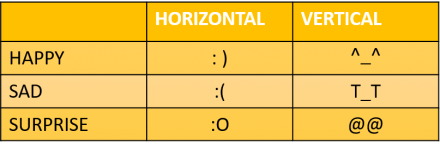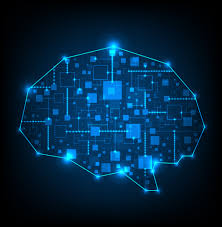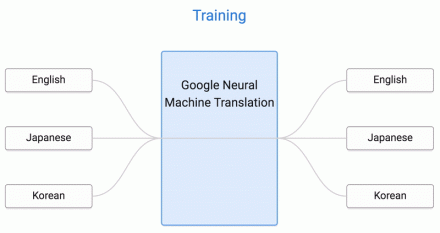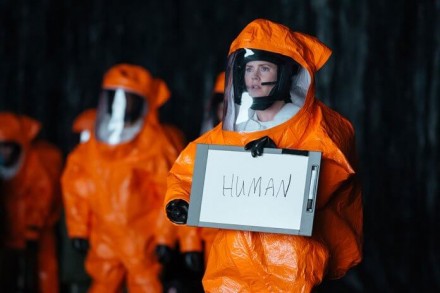Month: January 2017
Face-off: Cultural Perceptions of Emoticons

Emoticons play a huge role in text-based communications today. Just as facial expressions give non-verbal cues when we communicate in-person, emoticons provide context when we text, chat, email and post in online forums. The original two emoticons are widely credited to Scott Fahlman, a computer scientist at Carnegie Mellon University, who back in 1982 posted a smile : ) and a frown : ( in one of the university’s online bulletin boards as a tool to help his peers and professors distinguish between serious posts and jokes. A decade later, writer Neal Stephenson described emoticons as “the electronic equivalent of spin doctors” (Smiley’s People, 1993) and today there are more than 15,000 different emoticons to choose from, though most remain variations of Fahlman’s original two. The plethora of facial expressions and emotional states represented in modern emoticons are meant to help us understand each other better. But do emoticons get lost in translation across geographic and cultural lines? The short answer is yes.
Horizontal and Vertical Emoticons
Did you know that there are two styles of emoticons? Scott Fahlman posted his original smileys in the horizontal style (i.e. sideways), which often appears more natural to westerners who are used to reading and writing horizontally (e.g. English is read left to right, as are its emoticons). Vertical emoticons are more popular in East Asian countries and are meant to be viewed from top to bottom (i.e. eyes are pictured above the mouth).

In East Asian countries where vertical writing is commonly practiced, individuals may have trouble initially recognizing the faces in horizontal emoticons and some have found a tilt of the head (left ear to shoulder) helpful to see the sideways pictures. The same difficulty applies to Westerners attempting to discern vertical emoticons.
It is important to note that the Eastern/Western divide is not always on point. Studies have shown that a country’s spoken language actually has a higher impact in determining emoticon style than geography. For example, despite being located in the East, Twitter users in the Philippines and Indonesia tend to use horizontal emoticons because English is so commonly spoken there.
Eyes vs. Mouth
The main contextual difference between horizontal and vertical emoticons lies in which part of the face carries the meaning. The horizontal style emphasizes mouth shape for expressing emotion, commonly relying on the inexpressive colon sign for eyes. In contrast, the vertical emoticon style emphasizes eye shape for expressing emotion and commonly uses the flat underscore character for the mouth (or even leaves out the mouth entirely).
Masaki Yuki, a behavioral scientist at Hokkaido University in Japan, released a study in 2007 titled “Are the windows to the soul the same in the East and West?” In it, he investigates how cultural background influences the way people use facial expressions to show emotion. Americans, he says, are used to a culture of independence, emotional openness and overt self-expression. Since the mouth is the most expressive part of the face, smiling plays a huge role in daily American interactions. Politeness is often defined by the presence of a smile (regardless of whether or not it is genuine). In shops and restaurants, a bigger smile can translate into a bigger tip for workers and a more pleasant experience for the customer.
By contrast, people in East Asian countries like Japan, China and Korea tend to value humility and are far more “collectivistic and interdependent.” In these eastern cultures Yuki says, “It is more important for emotional expressions to be controlled and subdued, and a relative absence of affect is considered crucial for maintaining harmonious relationships.” Therefore, a typical smile or frown of the mouth is rare in a country like Japan. Instead, the people of eastern cultures look for emotional cues in the eyes (which are much more difficult to control than the mouth).
Localize for Your Audience
This cultural difference is the reason we have two styles of emoticons today. Vertical emoticons help easterners focus attention on the eyes, just as they do in real life and horizontal emoticons do just the opposite. It’s crucial to keep these cultural differences in mind when you localize materials for East Asian readers (and vice versa). It’s not just the words that must be translated and contextualized, but emoticons too.
The Author
 Sirena Rubinoff is the Content Manager at Morningside Translations. She earned her B.A. and Master’s Degree from the Medill School of Journalism at Northwestern. After completing her graduate degree, Sirena won an international fellowship as a Rotary Cultural Ambassador to Jerusalem. Sirena covers topics related to software and website localization, global business solutions, and the translation industry as a whole.
Sirena Rubinoff is the Content Manager at Morningside Translations. She earned her B.A. and Master’s Degree from the Medill School of Journalism at Northwestern. After completing her graduate degree, Sirena won an international fellowship as a Rotary Cultural Ambassador to Jerusalem. Sirena covers topics related to software and website localization, global business solutions, and the translation industry as a whole.
Get the latest insights delivered to your inbox
Contract Translation: 5 Ways to Minimize Cost and Turnaround Time

When translating contracts, there is zero room for error. Even a seemingly trivial deviation from the original text could result in an unexpected disadvantage which will last the entire lifetime of the contract. Ultimately, mistranslations could result in costly mediation or even legal fees.
Legally binding contracts should be translated either by a professional linguist with proven contract translation experience or by a Language Service Provider (LSP) that specializes in legal translation services. While a high-quality contract translation won’t come cheap, there are proactive ways to minimize costs and ensure the quickest possible turnaround time, including:
- Keep contracts simple by avoiding jargon
Jargon – terms used in a particular professional setting that are likely not understood by people outside that profession – should be avoided as much as possible. Jargon complicates the contract writing (and translation) process and can add an element of ambiguity to your document. This could potentially open up your document to alternate interpretations – which is precisely what you want to avoid when building an ironclad contract.
Instead, a contract should be as short as possible and written in simple and clear language that can be easily understood. By choosing words that can be translated with the greatest precision, you will not only protect the original intent and meaning of the contract, but you will also receive a faster and more accurate translation from your LSP.
- Rely upon your LSP’s translation memory
Translation memory is a database of translation terms, sentences, headings, or other segments kept on file for reuse at a later time. If you are translating contracts into the same languages on a regular basis, and if those contracts contain many of the same exact sentences or paragraphs, there is no reason to pay to translate the same sentences every time. You can lower costs and cut turnaround times by asking your LSP to implement translation memory for your contract translations.
Qualified LSPs utilize this computer-assisted translation (CAT) tool to recognize and “remember” previously translated segments of your documents. This means that provisions/clauses/conditions that have been translated previously into a given language can be stored and reused for future translation projects. This not only helps cut translation costs and speed up turnaround times, it also helps ensure consistency and accuracy across your contract translation projects.
- Use legalese only when it is the most useful terminology
A legal contract will, by definition, utilize legal language (often called “legalese”). Some legalese is unavoidable, but it can include archaic-sounding terms such as “hitherto” or “forthwith” – words whose exact definitions are unclear and usually have no precise equivalent in other languages. You should avoid this type of terminology and instead focus on legal words that actually help make the contract clearer and more effective.
In certain situations, legalese really is the most useful terminology. In fact, the term “useful legalese” has recently come into fashion, expressing the idea that what is most important in choosing a word is how useful it is rather than how it sounds.
Bottom line: If the words make the meaning clearer, use them. If not, avoid them.
- Use contract models for accelerated and more accurate translations
Contracts drafted in different countries and cultures may vary widely in presentation. The customary language, tone, and even order of principles in American contracts could require significant modification for a German or Swedish legal setting.
Gaining a sense of how the contract should be laid out in the target language will go a long way toward creating highly translatable contracts. Awareness of the standard information, document flow, and appearance suitable in the target jurisdiction is critical for keeping costs minimized.
Use contract models to save time on standard contract sections in different languages. Modeling a contract can also help reveal areas that are either too ambiguous or too technical for translation.
- Avoid using doublets
Many contracts employ unnecessary word-numeral doublets or sequenced word doublets and triplets. For example, a contract may dictate a numerical figure and in addition, write it out in words like this: “$32,000 (thirty-two thousand dollars)”. Or an employment agreement may say that the employer “employs, engages and hires” an employee rather than simply “employing” him.
For a translation-friendly contract, avoid using these types of doublets. The practice of utilizing doublets can add significantly to the cost of the contract translation (since most LSPs charge per word) and may inadvertently introduce ambiguity into the contract or worse, redundancy. Both inevitably add cost and therefore should be avoided.
Steps for saving time and money
The investment in professional contract translation is worthwhile given the importance of having an enforceable contract in place that is clearly understood by all the relevant parties and jurisdictions. Quality is paramount. But you can still maintain quality while lowering translation costs by drafting a contract with an eye toward making it straightforward to translate. Fewer words and less legalese will result in a more cost efficient and timely translation and even a better, clearer contract overall.
Get the latest insights delivered to your inbox
2016 USTR List of Notorious Markets

The United States Trade Representative’s office recently released its sixth annual List of Notorious Markets linked to “the detriment of legitimate trade in IP-intensive goods and services.” The List names 21 online markets and 21 physical marketplaces (in 10 different countries) that are known for engaging in or facilitating commercial-scale trademark counterfeiting and copyright piracy. This article is posted on Morningside IP Read More Here.
Get the latest insights delivered to your inbox
Google Breakthrough in Machine Translation is the First Step Toward General A.I.

Artificial Intelligence has inspired many Hollywood blockbusters, but it’s no longer taking a backseat to reality. In recent years, we’ve become accustomed to the presence of A.I. in our everyday lives, sometimes without even realizing it. But as we begin 2017, the stuff of Sci-Fi legend is truly becoming a reality and much of the action is taking place within the translation industry. To understand how we got here and where we’re going, let’s start with a brief overview of the four different types of A.I.
A.I. Timeline
Since the 1950s – Narrow A.I. describes specific technologies that are able to perform rule-based tasks as well as or better than humans. For example: a chess-playing program on the Ferranti Mark 1 or the face recognition program on Facebook.
Since the 1990s – Machine Learning uses algorithms and large amounts of data to ‘train’ machines to properly identify and separate relevant data into a subset and then make an informed prediction based on that data subset. In essence, it’s programming machines to learn – not to follow a specific set of rules. For example: Apple’s digital assistant, Siri.
Since the 2000s – Deep Learning is a new cutting-edge branch of machine learning where the algorithm’s structure is based on the human brain in a system of artificial neural networks that can learn from past actions to solve new problems without being specifically programmed to do so. For example: After watching 5,000 hours of TV, Google’s DeepMind A.I. was able to master lip-reading and outperform a professional human lip-reader for accuracy.
The not too distant future – General A.I. refers to complex machines that possess the ability to independently perform ‘general’ intelligent action with the same characteristics of human intelligence. These are the kinds of intelligent machines you’ve seen in Sci-Fi characters such as Star Wars’ C-3PO, Pixar’s Wall-E and Samantha, the computer operation system voiced by Scarlett Johannsen in Her.
What makes deep learning so cutting edge?
Deep learning enables machines to learn independently in the same way that human beings learn. The human brain contains around 100 billion neurons, each of which is connected to thousands of neighboring neurons in a massive biological neural network. When a neuron passes an electrical charge to its neighbor, it forms a new thought pathway that can either help or hinder a person from learning new things. With life experience, the synaptic connections between pairs of neurons grow stronger or weaker based on trial and error. This, for example, is how toddlers learn to walk and talk (not through a rule book or fancy algorithms).
Over the past 16 years, artificial neural networks have revolutionized A.I. by copying the idea of learning from data in the world around them (like humans) instead of the way conventional computers learn from rules. When exposed to enough data, machines created with multiple layers of neural connections (like a brain) can, through trial and error, make classifications or predictions of their own. This process of learning through trial and error is called “training.” In order to be effective, training requires artificial neural networks to see hundreds of thousands, or even millions, of pieces of real-world data until the neurons are tuned so precisely that they pass on the correct information nearly every time.
Effective training is what’s new from the past decade and a half – not the concept of artificial neural networks as a whole. The idea itself dates back to the early 1940s, but until the last decade or so it was disregarded as impractical. The technology involved in building a neural network was thought to be too computationally complex and the mountains of data required for effective training were previously impossible to obtain. Today, we have both the technology and the data to implement artificial neural networks and we’ve learned that after sufficient training, they can extract patterns, detect valuable trends and even predict future events.
Breakthrough in machine translation
Before deep learning became possible, all machine translation services used Narrow A.I. and followed the same set of basic rules: (1) separate sentences into fragments, (2) look up those words in a dictionary of statistically derived vocabulary terms, (3) apply post-processing rules to rearrange the translated fragments back into a meaningful sentence. As we all know, this system can result in some pretty awkward translations (e.g. “priest of farming” instead of “minister of agriculture”). Flawed machine translations happen because Narrow A.I. is restricted to specific rules, and languages tend to have as many exceptions as they have rules. Narrow A.I. can’t get a joke, pick up on sarcasm, identify uncommon names or understand cultural context. Deep learning, however, opens up a world of possibilities for genuinely useful machine translation and Google Translate just kicked that door wide open.
Google Translate supports 103 different languages and for the past 10 years, it essentially consisted of 150 Narrow A.I. programs used to translate between all of these language pairs. Then, in September, Google announced that they were switching to a single multilingual system based on artificial neural networks. They call the system Google Neural Machine Translation (GNMT) because it continuously learns from millions of lingual examples and allows for a single system to translate between multiple languages, all while sounding much more natural and less awkward than Narrow A.I. translations.
The creators expected the new Google Translate to improve over time (that’s what neural networks do, after all), but even they got a shock when they discovered how much Neural Machine Translation can accomplish. After release, researchers on the Google Translate team asked if the new system can translate between a language pair which it has never seen before. For example, if the system is trained to translate Japanese to English and Korean to English, can the system then generate a decent Japanese to Korean translation without additional training? The answer, to their surprise, was yes: “To the best of our knowledge,” Google writes in its Research Blog, “this is the first time this type of transfer learning has worked in Machine Translation.” Researchers are calling it zero-shot translation.

What does zero-shot translation mean for the future of A.I.?
To achieve the zero-shot translation, Google researchers believe their A.I. system invented its own “interlingua” common language based on contextual concepts and sentence structure instead of relying on word-to-word translation equivalents. This means words and sentences with shared meaning are internally represented by the GNMT system in similar ways regardless of original language. Some are calling this a “secret” or “artificial” language because the GNMT created it for the specific task of translation and it’s not readable by humans, but the point remains – it’s a powerful first glimpse of a future where computers will be able to generate their own original creations to aid themselves in completing tasks they were never trained to do. Once machines can learn from and replicate realistic human speech, they will be able to irrefutably pass the Turing test and bring us that much closer to a world of general A.I. where characters like C-3PO are no longer the stuff of fiction.
Get the latest insights delivered to your inbox
Making Informed Life Science Translation Decisions: Quoting Early, Precisely and Often

With 2016 coming to an end, and in light of new legislation placing greater importance on quality medical translations (Medical Device Regulations, In-Vitro Diagnostic Regulations and CE Marking), I’ve started thinking about lessons from my past experience working in the world of biotech. Before joining the life sciences division, I worked with a nutraceutical startup out of Harlem Biospace where I met numerous vendors with advice, products and services for the life sciences industry. Now that I’ve seen how both ends of the client-vendor relationship operate, I’ve been able to codify three crucial lessons for establishing and maintaining healthy partnerships: Quote Early, Precisely and Often.
- Quote Early – Whether you’re working on regulatory submissions, product development or even publishing in academia, tight deadlines often demand the use of service partnerships to complete your project expertly and efficiently. You can avoid unnecessary stress and rush fees by approaching a medical translation service provider early-on in the process. This will allow them to gauge the full project scope and have more time to explore cost-saving options for rolling out your international initiatives.
- Quote Precisely – It’s best to provide your translation partner with editable source files and a glossary of preferred terminology at the start of your working relationship. These files will allow them to give you the most accurate quote possible.
- Quote Often – Back when I worked at a biotech startup, I saw that the status of a given project could change on a daily basis. This taught me that clear communication is essential to ensure that your project deliverables match your expectations. To accomplish this, you need to maintain an open dialogue with your translation partner as you develop your timelines and always make sure to clarify any specific requirements or concerns. (For example, clients looking to expand their educational materials typically have a different set of needs and timelines than clients preparing reports from international clinical trials.)
About the Author:

Jack Fischer is a Business Development Manager at Morningside’s Life Sciences division. After researching Tuberculosis genetics at Albert Einstein College of Medicine, and working with numerous biotechnology startups in New York, Jack moved to Morningside in order to apply his expertise to developing and implementing translation solutions for the life sciences industry. Jack has a dual B.A from Skidmore College in Integrative Biology & Business.
Contact Jack directly at any time via: [email protected]!
Get the latest insights delivered to your inbox
Arrival: Hollywood’s Newest Hero is a Translator

*Spoiler alert!
Arrival, the newest sci-fi alien encounter film to hit the silver screen, promotes an unlikely and yet truly plausible hero. When 12 alien ships unexpectedly arrive on Earth, Dr. Louise Banks, an American translator and expert linguist, is called upon by the U.S. military to help answer the film—and humanity’s—most urgent question: Why are they here? Dr. Banks (played by Amy Adams) becomes the film’s hero when she cracks the code of the aliens’ written language and deduces that their circular smoke-like symbols, which look a lot like inkblots, actually contain complex thoughts and ideas portrayed in non-linear sentence structures.
With the help of physicist Ian Donnelly (played by Jeremy Renner), Dr. Banks realizes that the non-linear aspect of the language is actually a direct reflection of how the foreign species thinks – just as their written language is structured in a way where the concept of time is irrelevant, their thought process is also unhindered by time’s limitations. The twist is that the more Dr. Banks begins to understand the language, the more she begins to think like its speakers. By the end of Arrival, moviegoers realize that the clips of Dr. Banks’ daughter portrayed as flashbacks throughout the film are not memories at all. Rather, they are her visions of her own future which she is now able to see thanks to her reoriented sense of time.
This transcendence of time plays to the movie’s sci-fi genre, but the truth is that Dr. Banks’ experience is anything but alien. In fact, it fits precisely with the age-old idea that language and thought are uniquely intertwined. This concept dates all the way back to Plato and was examined more recently in the theory of linguistic relativity, also known as the Sapir-Whorf hypothesis. This somewhat controversial theory states that the structure of a language affects its speakers’ cognition and world view – which is precisely what happens to Dr. Banks as she begins to understand the circular nature of the alien symbols.
However, while her comprehension of the mysterious language grows, so does Dr. Banks’ concern over the true context of specific words. This concern goes global when Dr. Banks finally asks the all-important question of why the aliens have come to Earth and translates their answer into English as “offer weapon.” This translation prompts global chaos as humanity fears it is on the brink of extinction and world leaders debate how to deal with the existential threat. But Dr. Banks, in a race against time, insists that “we need to make sure that they understand the difference between a weapon and a tool. Language is messy and sometimes one can be both.” This intergalactic example of language localization is the key to Dr. Banks’ ultimate triumph. She uses her skills as a linguist to interpret the real meaning of “weapon” and determines that what the aliens actually mean is “offer gift.”
In the end, we learn that the aliens came to Earth peacefully with the intention of offering humanity a gift – the gift of their language – because they know that in 3000 years they will be in need of human assistance. The gift serves both races as humans receive a new language whose byproduct is the ability to transcend time and see the future, while the aliens establish a relationship and way to communicate with their future saviors. Ultimately, a linguist and a language save the day, and humanity gets a lesson in the importance of accurate translations in bridging cultural differences.

